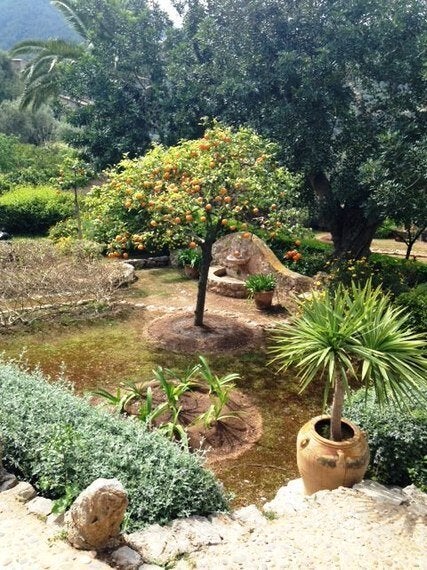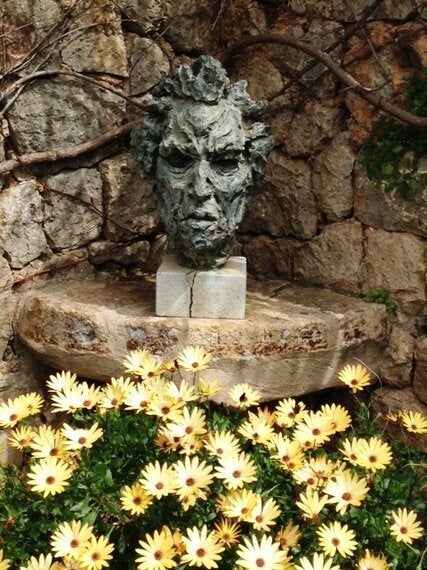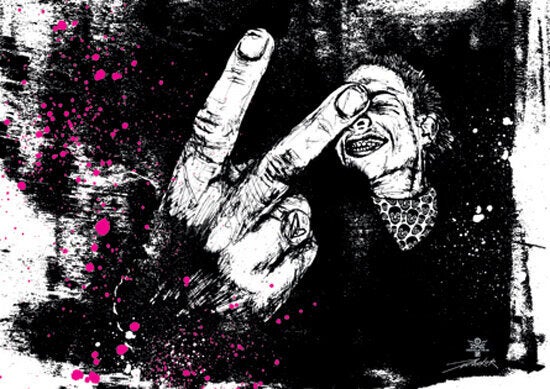As you weave between the blooming orange trees, which beguilingly give out an aroma of comforting honey in the spring, in the garden of the grand but homely house of the late great poet and author Robert Graves, you feel he'd achieved what every artist craves - an inspiring base, studio or home where you can create.
So much so, he lived and worked here high up in the Sierra Tramuntana mountains , with views out to the mesmeric shimmering Mediterranean, on the edge of the village of Deia in North West Majorca, for 50 plus years until his death at 90 in 1985.
But, as with most artists, even back in 1932 when Graves moved out of West London to the Spanish isle, the cost of living was foremost in his mind.
In his introduction to his essay Why I Live In Majorca, he writes that it costs him a quarter of what it would have cost him to stay in London. Add in, as he says, the pleasant climate and a relative lack of mosquitos up in the mountains, and you have one very happy artist who could go on to create works such as I, Claudius, while entertaining the great and good of the artistic world - Ava Gardner, Kinglsey Amis, Alec Guinness, and a young Gabriel Garcia Marquez - at his fantastic homestead.
At the time of his move to Ca N'alluny ('the faraway house'), Deia was a ramshackle collection of houses perched on precipitous cliffs, connected, but quite far removed from the capital Palma and life on mainland Spain.

Graves said the house gave him the solitude to work, without feeling that the mountainous island was big enough to not make him feel claustrophobic. Interestingly, walking around his house - which is open to the public as a museum - you can see that he chose to work in rooms without a view.
This wildness of the island was something I appreciated, walking back on the demanding coastal footpath to Puerto Soller, a route the younger Graves took many times, via the mountain goats, to the lighthouse high above the harbour and on, around the bay, to my base at the new Jumeirah Port Soller hotel, an artist refuge now of a different kind, used by Absolutely Fabulous inspiration Lynne Franks ( and heroine of mine) , a Deia citizen for many years, who often holds her women workshops at the hotel.

Following in the footsteps of the artists and writers who took up refuge in a cheap post-First World War Paris, Graves was part of a tradition that is even more heightened today.
Now the latest generation of British artists, defeated by trying to find space in the capital, where the freedom to work is not overshadowed by an overburdening rent, are having to look abroad.
Back in the Eighties, Damien Hirst, Tracey Emin, Gavin Turk and many of the YBAs found cheap space in East London's Shoreditch when no one else wanted to live there.
Now Shoreditch, like Deia, is home to millionaires, the artists long driven out by rising rents. Wherever artists go, the property developers seem sure to follow
It seems the authorities of London, for the most part, lack the vision of the likes of Montreal in Canada which has been renting out huge areas of space for the arts in the centre of the city - thus making sure otherwise unlikely areas become trendy, and safe - for as little as £9 an hour.
This has given the likes of Arcade Fire and Godspeed You! Black Emperor the time to develop into such brilliant, era defining musical acts, while underpinning an incredible visual arts, theatre and dance environment of real dancing and not to DJ's.
In London, artists are fleeing a capital overun by property investors from near and far, looking abroad for an artistic environment that encourages the risk takers by offering cheap rents.
And many are looking to Berlin... again.
Following Christopher Isherwood in the Thirties, and where Kraftwerk, Bowie and Eno inhabited the warehouses of the Seventies, and Nick Cave and The Birthday Party sought inspiration on many, often less savoury, levels in the Eighties, British painters such as the in-demand David Walker - whose huge colourful canvases of women are attracting attention worldwide (his London solo show, in association with the Lawrence Alkin Gallery in Soho opens in November 2014) have now relocated to the enticingly priced German city, driven out of the UK by yet another Government-sponsored housing bubble and welcomed with open arms by the Berlin Senate's cultural affairs department.

I have spent many many hours in freezing cold, semi derelict warehouse spaces on the edge of nowhere in the UK, watching artists in gloves, hats and jumpers create incredible works of art that has made the world sit up and pay homage.
The UK has, by far, the most innovative, thought-provoking and talented artists on the globe. Just imagine what a bit of warm, cheap, creative space would do - not only for the artists, but for this country.
Picture credits: Jo Brooks, Dave Walker.